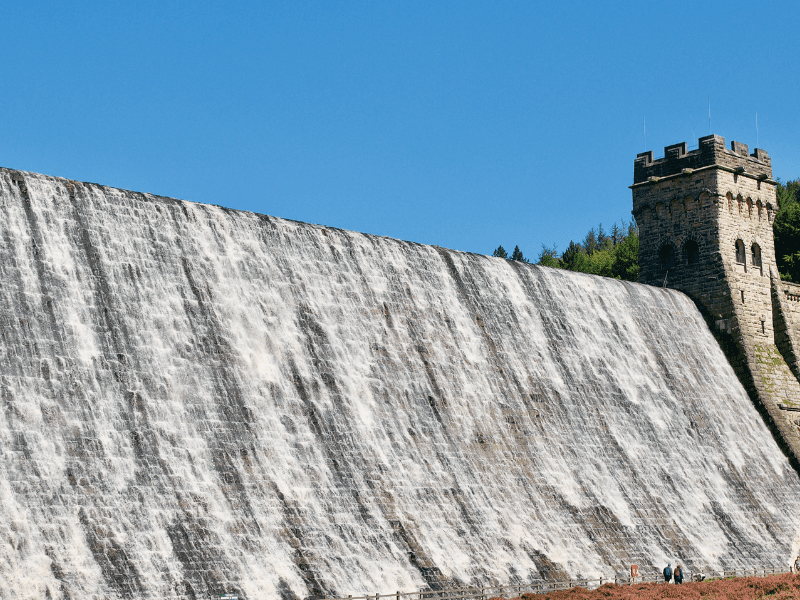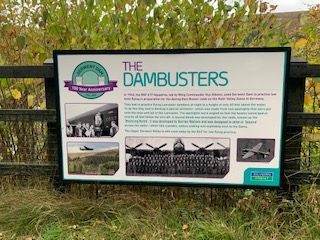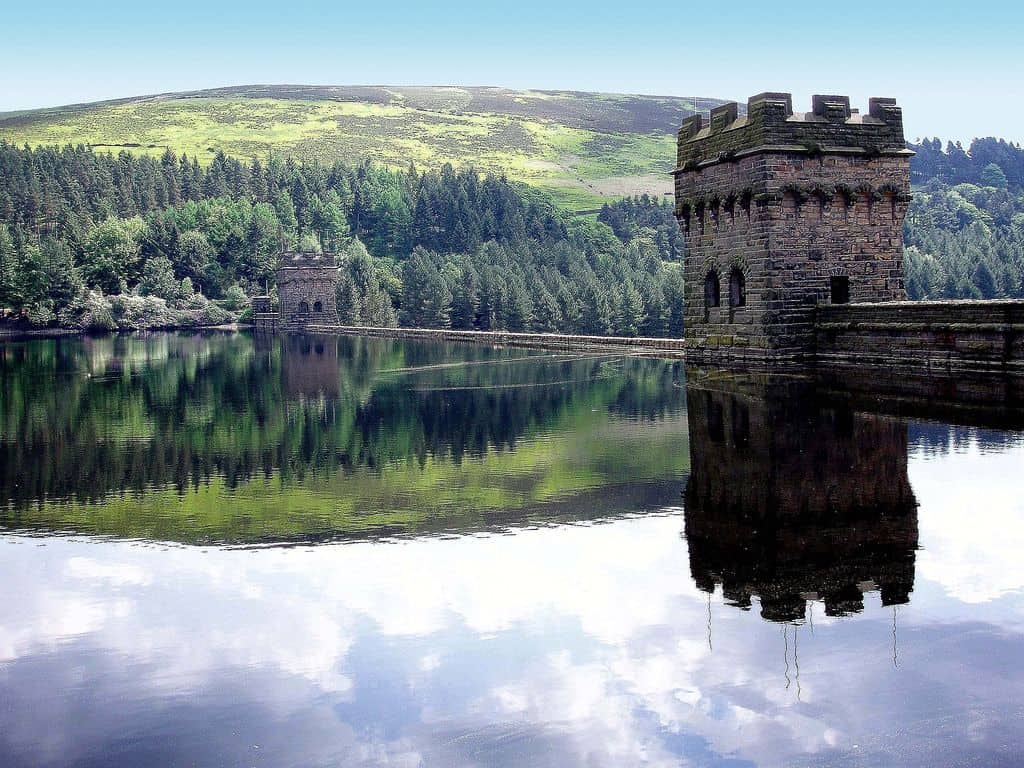Walks around the Derwent Reservoir in the Peak District


Estimated reading time: 6 minutes
With its intriguing history of the dam and its surrounding countryside, the walks around the Derwent Reservoir in the Peak District are a simply stunning place to visit. Steeped in history and in North Derbyshire, it is 10 miles from both Glossop and Sheffield.
Travelling there by car is a must. It is a 20-mile journey from us in Buxton, taking about 40 minutes, where the journey passes through the villages of Castleton and Bamford along the route. Many of our guests have commented on the amazing views, with fascinating walks, great hiking areas and great photo opportunities of the natural surrounding beauty of the area.
It is a beautiful setting all year. We enjoy visiting in the Autumn though to witness the dam when it is in full flow.

Stroll among the Derwent Valley history
Peak District Derbyshire describes ‘The valley as a very attractive location for the storage of water, with its long deep valley and narrow points for dam building. This, combined with a high average rainfall, low population level and heavy demand for water from the industrial towns that surrounded the Peak District, made the case for reservoir construction. The Derwent Valley Water Board was set up in 1899 to supply water to Derby, Nottingham, Sheffield and Leicester and the Howden and Derwent Reservoir shortly afterwards.’
Peak District Derbyshire tells us that ‘demand continued to grow though, and they took the decision to build one very large reservoir, to be called Ladybower. This, though, entailed flooding the villages of Ashopton and Derwent and caused considerable unrest. However, the project went ahead, and they moved the villagers to houses built for them at Yorkshire Bridge.’
The flooding of the dam was completed in 1945, and King George V1 carried out the opening ceremony on Tuesday September 25th, 1945’. (with kind thanks from Derbyshire Peak District for describing events).
Amble around the surrounding countryside at Derwent Valley
Much of the surrounding countryside is woodland comprising larch, spruce, and pine conifers, as pictured below and makes for a wonderful leisurely walk to Derwent Valley. Here you can see our black Labrador, Nayvee, enjoying a run in the countryside.

Fairholmes Visitor Centre
The visitor’s centre is open from April to October, Monday to Friday from 10am to 4:30pm and on Saturdays, Sundays and bank holidays from 9:30am to 4:30pm.
Staff at the visitors’ centre can advise on how to make the most of your visit with 3 different walking routes to choose from. The shortest walk on offer is the red route and takes 40 minutes. The black route is a 1 hour walk and takes in more scenery, whilst the longest of the three, the green route, takes 2 hours and offers even more for your visit to the area. It is an ideal place to explore the Upper Derwent Valley.
What about parking?
There is ample space at the car park available at Farholmes Visitor Centre. The cost for a full day is £5 or £3 for 2 hours. Take cash to pay for parking. There is an option to pay by card at the visitor centre too though.
There is a refreshment kiosk in a picturesque spot with picnic tables and benches available. It is open every day from 8am to 6pm to buy hot and cold drinks and snacks.
With so many beautiful spots to stop off for a picnic, we are happy to prepare a sumptuous picnic for your day out in the Upper Derwent Valley.
Can I hire a bike here and cycle?
Fancy cycling in the area? Visit Derwent cycle hire at https://www.peakdistrict.gov.uk/visiting/cycle/bike-hire-centres/derwent for more information about hiring a bike to explore the area even further.
Please take note regarding arranging payments for cycle hire: Derwent Valley Cycles do not take cash. Card payments only as there is no mobile phone signal or wi-fi in the valley. We advise you to move funds between accounts before entering the valley.
You can contact them via phone at 01629 816526 or by email at derwent.cyclehire@peakdistrict.gov.uk for any enquiries before your visit.
The Dam busters story

During the second world war the reservoir was used by pilots of the 617 Squadron for practising the low-level flights needed for Operation Chastise (commonly known as the “Dam Busters” raids), due to its similarity to the German dams of the German Ruhr.
Today there is a commemorative plaque to 617 Squadron on the dam, and in September 2014, a unique flypast took place with the two-remaining airworthy Lancasters, one from the Battle of Britain Memorial Flight, and one from Canada, flying three passes in formation.
If you are lucky during your visit, occasionally a plane flies low over the top of the dam and can make for a very memorable day.
Our other posts also give you ideas of places to visit in the Peak District.
© Copyright 2022| All Rights Reserved
Download our FREE GUIDE to reveal some of the prettiest villages in the Peak District to help you plan your stay.
Click on the image below.


